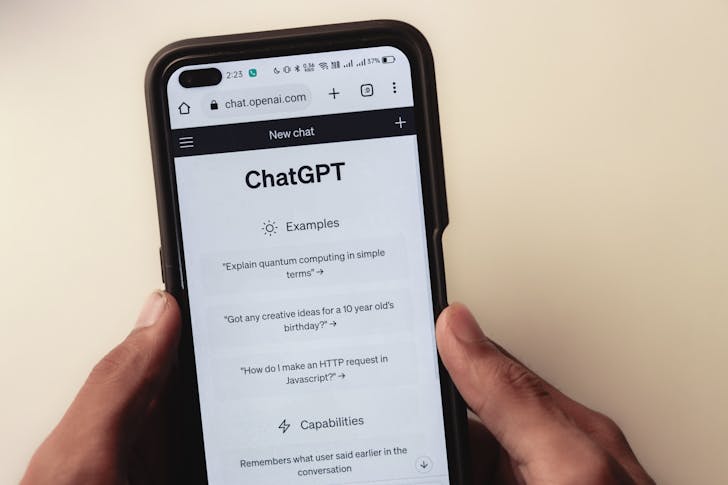
How to Securely Deploy AI Agents

AI is changing how companies work. From customer support to fraud detection, AI agents are helping businesses run smarter and leaner. But they also bring big security risks if you don’t set them up right.
However, AI agents are not toys. They handle private info, make decisions, and interact with users in real time. If you don’t protect them, bad actors can twist them into tools for damage, leaking data, impersonating users, or even hijacking entire systems.
So, how do you keep your AI agents safe? Here is how to deploy them with confidence, without opening the door to trouble:
Lock Down Access Right From Day One
AI agents should never have a blank check. Limit what they can see, do, and say. Only give them access to the data and tools they absolutely need. Nothing more and nothing less.

San / Pexels / Use strict permission settings and role-based controls. Keep a log of what they access and when. That way, if anything strange happens, you can track it fast.
Don’t wait until after a breach to realize your bot had too much freedom. Gauge it hands-on and address it right on the spot.
Always Train Them on the Right Data
Feeding an AI agent raw, messy, or sensitive data is asking for trouble. If your agent spits out personal info or company secrets, you have a real problem.
Always clean your training data. Remove names, passwords, financials, or anything private. Better yet, use synthetic data where you can. It teaches your AI what it needs to know, without exposing real-world risks.
Put a Guardrail on Responses
AI agents can go off-script, and that is dangerous. You don’t want a chatbot giving financial advice or leaking internal documents because it “thought” it should help.
Build in filters to catch risky outputs. Use pre-set rules and content safety checks to keep replies in line. Add a human-in-the-loop system for sensitive tasks. If your AI is guessing, someone should be watching.
Monitor Everything, All the Time
Once your AI agent goes live, the real job starts. You can’t just set it and forget it. Bad actors test AI systems constantly, looking for cracks.

Bert / Pexels / Do not make your AI bots completely autonomous. Set up real-time monitoring tools and flag weird patterns, like strange questions or repeated access attempts.
Vigorously watch for signs of prompt injection attacks or agents being manipulated. And don’t just collect the data. Act on it right on the spot.
Keep It Updated Like Your Life Depends on It
Hackers evolve, and your AI agents should, too. If you are using old models or outdated security rules, you are asking for a breach.
Regularly patch and upgrade your AI systems. Run security audits often. Treat your AI agent like software, because it is. Don’t let it run on last year’s rules in today’s threat landscape. The world is changing fast. And so should your AI bots.
Remember, AI agents are not just helpful assistants. They are entry points into your systems, your data, and your brand’s voice. One mistake can cost you customer trust, time, and serious money.
Before you trust your AI agent with live traffic, break it. Try to confuse it. Feed it weird prompts. Pretend you’re an attacker and see what it does.
More in Business
-
`
Essential & Easy-to-Follow Health Tips to Enjoy A Great Week
Start Your Day With Hydration The first thing your body needs in the morning is not coffee. It is water. A...
February 6, 2025 -
`
Avoid These 7 Common Etiquette Mistakes When Dining Out
Speaking Too Loudly One of the most obvious etiquette mistakes is talking loudly at the table. Restaurants are social spaces, but...
January 29, 2025 -
`
Star Singer Nelly Furtado Wants Fans to Embrace ‘Body Neutrality’ in 2025
Singer Nelly Furtado is kicking off 2025 with a heartfelt message for her 1.5 million fans: embrace body neutrality. The Canadian...
January 25, 2025 -
`
Inside Zendaya and Tom Holland’s Secret Romance and Engagement
Zendaya and Tom Holland’s love story is one of Hollywood’s most heartwarming and low-key romances. Over the years, the couple has...
January 15, 2025 -
`
Top 5 Stable Blue-Chip Stocks You Should Consider Buying in 2025
Blue-chip stocks are the cornerstone of any serious investor’s portfolio. As we kick off 2025, it’s a perfect time to assess...
January 8, 2025 -
`
Bird Flu: What Is It & How Do People Catch the Viral Disease?
Bird flu is making headlines again, and with good reason. Officially known as avian influenza, this disease primarily affects birds but...
January 3, 2025 -
`
Four Seasons to Bring Luxury Resort & Residences to Deer Valley Ski Resort in Utah
The Four Seasons new hotel is making waves in Deer Valley’s highly anticipated East Village expansion. Known for setting the gold...
December 25, 2024 -
`
Who Is SZA Dating? The Singer Confesses Her Struggles With Love
Finding love can be tricky, even for someone as talented and successful as SZA. Known for her soulful lyrics and Grammy-winning...
December 17, 2024 -
`
Why Breathing in Wildfire Smoke Is Dangerous
Breathing in wildfire smoke is downright dangerous for your health. The tiny particles in the smoke can wreak havoc on your...
December 13, 2024















You must be logged in to post a comment Login